Exam Details
Exam Code
:350-501Exam Name
:Implementing and Operating Cisco Service Provider Network Core Technologies (SPCOR)Certification
:CCNP Service ProviderVendor
:CiscoTotal Questions
:509 Q&AsLast Updated
:Apr 10, 2025
Cisco CCNP Service Provider 350-501 Questions & Answers
-
Question 381:
Refer to the exhibit.
Router 1: interface gigabitethernet0/1ip address 192.168.1.1 255.255.255.0
router ospf 1network 192.168.1.0 0.0.0.255 area 1
Router 2: interface gigabitehternet0/1ip address 192.168.1.2 255.255.255.0
interface loopback 0ip address 192.168.2.1 255.255.255.0
router ospf 2network 192.168.1.2 0.0.0.0 area 2 network 192.168.2.1 0.0.0.0 area 1
Router 1 is missing the route for the router 2 loopback 0. What should the engineer change to fix the problem?
A. the area numbers on Router 1 and Router 2 to be similar
B. the wildcard mask network statement in OSPF of Router 2
C. Router 1 to be an ABR
D. the hello timers on Router 1 and Router 2 to be different
-
Question 382:
A network team has failed to implement IS-IS multitopology. What is the reason for it?
A. The router did not support VRFs.
B. The routing process did not support extended metrics.
C. The router did not have Cisco Discovery Protocol and Cisco Express Forwarding disabled.
D. The routing process supported Level 1 only.
-
Question 383:
Refer to the exhibit.
Router1: tacacs-server host 192.168.1.2 single-connectiontacacs-server key ciscotest
What is the result of this configuration?
A. Router 1 opens and closes a TCP connection to the TACACS+ server every time a user requires authorization.
B. Router 1 and the TACACS+ server maintain one open connection between them only when network administrator is accessing the router with password ciscotest.
C. Router 1 and the TACACS+ server maintain one open connection between them.
D. Router 1 opens and closes a TCP connection to the TACACS+ server every time a user requires authentication.
-
Question 384:
Which QoS model allows hosts to report their OoS needs to the network?
A. DiffServ
B. CB-WFQ
C. IntServ
D. MQC
-
Question 385:
Refer to the exhibit.
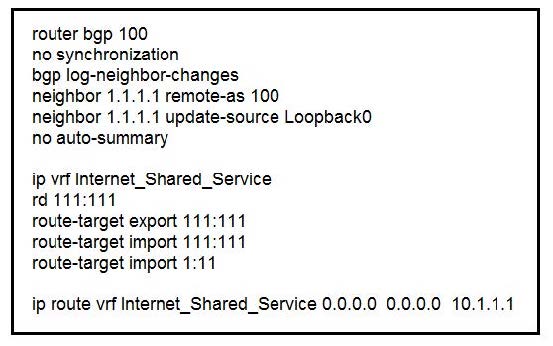
Which additional configuration must an engineer to the adge router to inject a default router into the MP-BGP address family for the internet_Shared_Services dedicated VRF?
A. router bgp 100 address-family vpnv4 neighbor 1.1.1.1 activate
neighbor 1.1.1.1 send-community extended
neighbor 1.1.1.1 next-hop-self
address-family ipv4 vrf internet_shared_service
network 1.1.1.1
B. router bgp 100 address-family vpnv4 neighbor 1.1.1.1 send-community both exit-address-family
address-family ipv4 vrf internet
no synchornization
network 0.0.0.0
C. router bgp 100 address-family vpnv4 neighbor 1.1.1.1 activate neighbor 1.1.1.1 send-community extended exit-address-family
address-family ipv4 vrf internet
no synchornization
network 0.0.0.0
D. router bgp 100 address-family vpnv4 neighbor 1.1.1.1 activate neighbor 1.1.1.1 send-community both exit-address-family
address-family ipv4 vrf internet_shared_service
no synchornization
network 0.0.0.0
-
Question 386:
Refer to the exhibit.
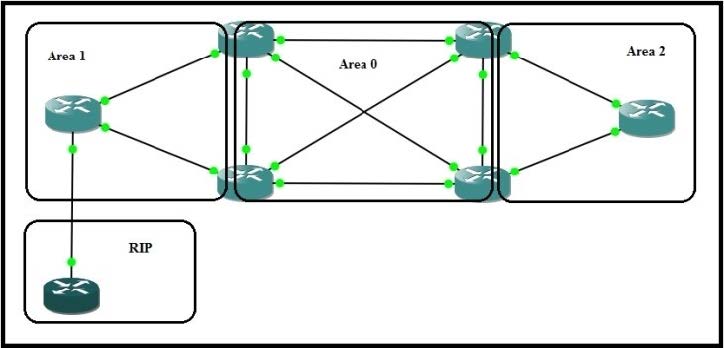
RIP network 192.168.1.0/24 is redistributed in OSPF Area 1; both Area 1 and Area 2 are configured as NSSAs.
Which three statements describe the OSPF behavior in this scenario? (Choose three.)
A. Area 2 does not see the network 192.168.1.0/24 in its link-state database.
B. Network 192.168.1.0/24 is advertised in a Type 7 LSA in Area 1.
C. Network 192.168.1.0/24 is advertised in a Type 5 LSA in Area 0.
D. Network 192.168.1.0/24 is advertised in a Type 7 LSA in Area 0.
E. ABR between Area 0 and Area 2 converts network 192.168.1.0/24 to a Type 7 LSA.
F. Network 192.168.1.0/24 is advertised in a Type 5 LSA in Area 2.
-
Question 387:
Refer to the exhibit.
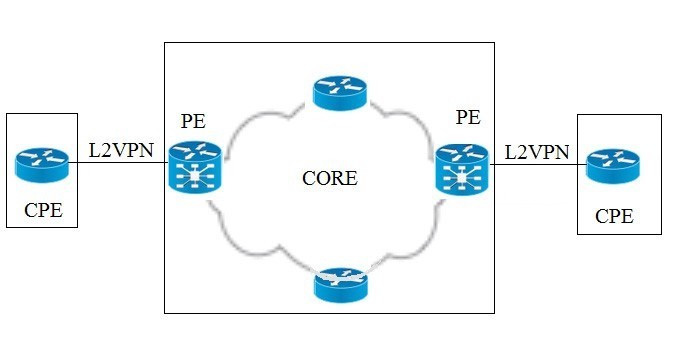
The PE devices are Cisco ASR 9000 Series that provide L2VPN services according to the EVC model. The customer intends to run several C-tags on both ends of the connection. What happens to the existing VLANs on the Layer 2 transport on PEs that face the CEs?
A. Existing VLANs are removed by default.
B. Existing VLANs need to be removed by using the rewrite command.
C. Existing VLANs are preserved by default.
D. Existing VLANs need to be reconfigured by using the encapsulation command.
-
Question 388:
Refer to the exhibit.
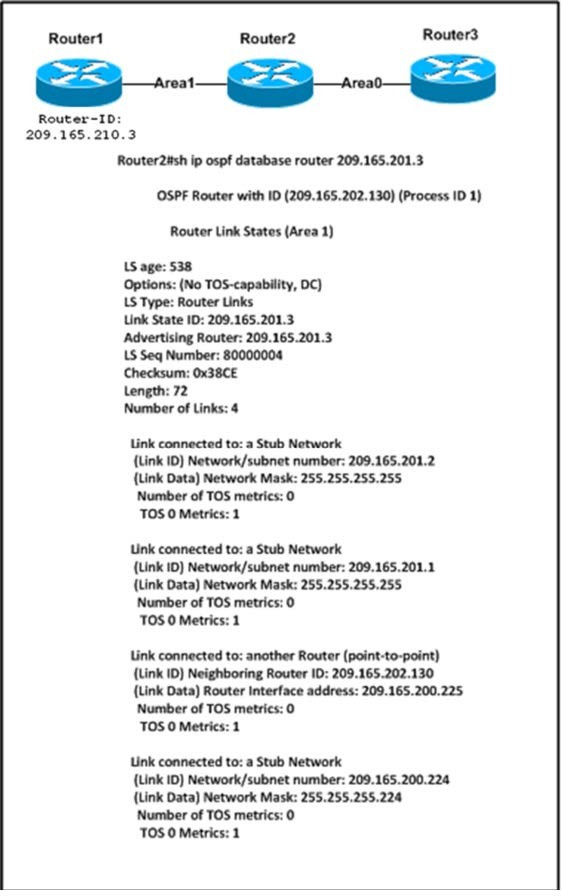
Router 2 connects OSPF area 1 and area 0. Router 2 receives LSA type 1 from Router 1 in area 1. How many type 3 LSAs will be generated by Router 2 into area 0 to advertise all prefixes that are announced by the Router 1 LSA type 1 packet?
A. 1
B. 2
C. 3
D. 4
-
Question 389:
Refer to the exhibit.
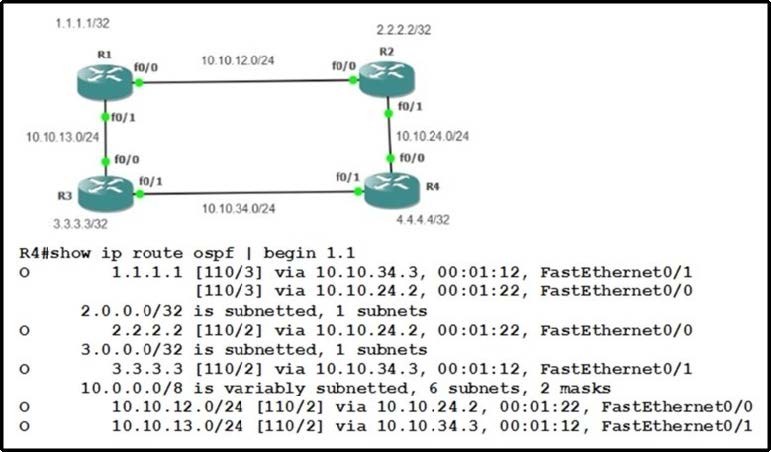
Which command group does a network administrator use to filter out R3 (3.3.3.3 subnet) from the R4 routing table?
A. R4(config)# router ospf 1 distribute-list prefix-list filter in
B. R2(config)# router ospf 1 distribute-list prefix-list filter out Fa0/1
C. R4(config)# router ospf1 distribute-list prefix-list filter in Fa 0/0
D. R3(config)# router ospf 1 distribute-list prefix-list filter out Fa 0/0
-
Question 390:
Refer to the exhibit.

A company is deploying IPv6 using a dual-stack approach. OSPFv2 is used for IPv4 routing and is redistributed into the BGP IPv4 address family. The network engineer also needs to enable OSPFv3 for IPv6 routing using the same design
that is used for OSPFv2. All prefixes in the OSPFv3 database must be redistributed into the BGP IPv6 address family at router R2, but R3 does not receive the loopback 0 IPv6 address of R2 via BGP.
Which action will fix this problem?
A. redistribution of BGP routes into OSPFv3
B. redistribution of OSPFv3 routes into BGP with include-connected
C. mutual redistribution of OSPFv3 and BGP routes
D. redistribution of connected OSPFv3 routes
Related Exams:
300-510
Implementing Cisco Service Provider Advanced Routing Solutions (SPRI)300-515
Implementing Cisco Service Provider VPN Services (SVPI)300-535
Automating and Programming Cisco Service Provider Solutions (SPAUTO)350-501
Implementing and Operating Cisco Service Provider Network Core Technologies (SPCOR)
Tips on How to Prepare for the Exams
Nowadays, the certification exams become more and more important and required by more and more enterprises when applying for a job. But how to prepare for the exam effectively? How to prepare for the exam in a short time with less efforts? How to get a ideal result and how to find the most reliable resources? Here on Vcedump.com, you will find all the answers. Vcedump.com provide not only Cisco exam questions, answers and explanations but also complete assistance on your exam preparation and certification application. If you are confused on your 350-501 exam preparations and Cisco certification application, do not hesitate to visit our Vcedump.com to find your solutions here.
